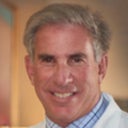Rhinoplasty and elevation of the nasal tip: you ask a very complicated and intriguing question. The full answer to the question would fill a volume. First of all the plastic surgery textbooks say that the ideal nasolabial angle is approximately 105 to 110° for a woman. A nose with a right angle of 90° would look too strong and masculine and is better suited to a man. Furthermore that angle dips down when smiling so if the tip is not slightly higher than 90° it will tip down when smiling which can be very unattractive to most women. Women who have asked for longer noses with less rotated tips will often later decide that they should have had their tips rotated higher and will sometimes seek revision to achieve this. Experienced plastic surgeons have had several such cases and often try not to give the patient a result they will later regret. But nevertheless the patient should have the final say in what the goal is and if the plastic surgeon does not agree with it his option is to not do the case. There are other issues involved. When A dorsal is removed, which occurs in most cases and when the nose is narrowed , which occurs in most cases the length of the nose suddenly looks excessive, and shortening of the nose with elevation of the tip is the only way to bring the length into conformity with the new reduced with. If you take a profile photo of a patient with a large dorsal hump who’s nose does not appear to be particularly long and erase the hump you will see that the nose looks too long . When confronted with that on the operating table the surgeons solution is to shorten the nose which rotates the tip upward. There are other factors which are not entirely in our control. The nose tip regularly falls or drops several degrees after surgery. In anticipation of this the surgeon often over corrects or over rotates the tip upward anticipating that it will drop several degrees. If it does not drop as much as expected the patient will be left with a slightly over rotated tip. There are other factors involved in long-term healing. scar contracture and shifting of the Cartlidge of the tip in relation to the Cartlidge of the mid portion of the nose which may make some tips rise over the long-term. There is a host of other factors and a host of other considerations but as I said they would fill a volume. How much to rotate a tip remains a significant issue on the plastic surgeons mind before and during each and every rhinoplasty he performs.
